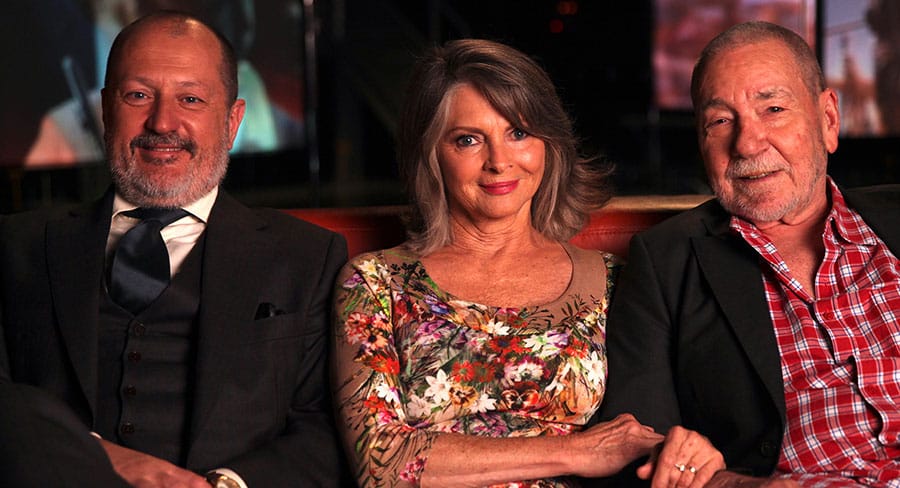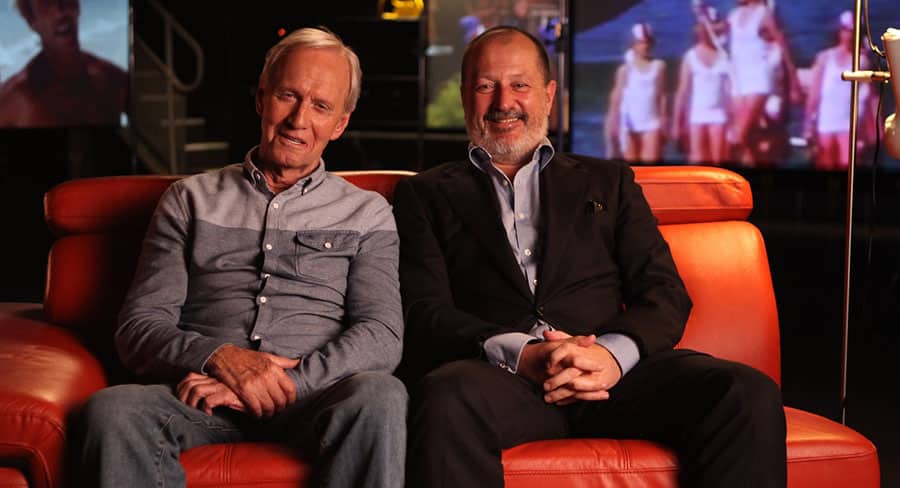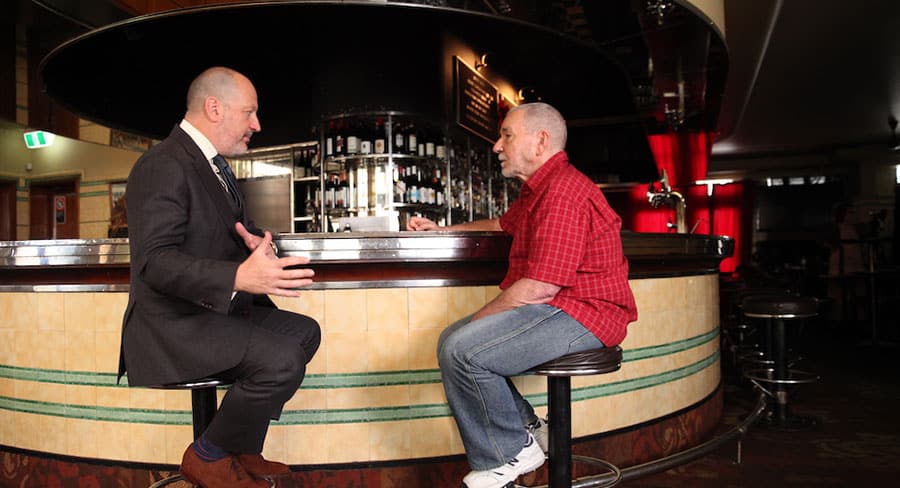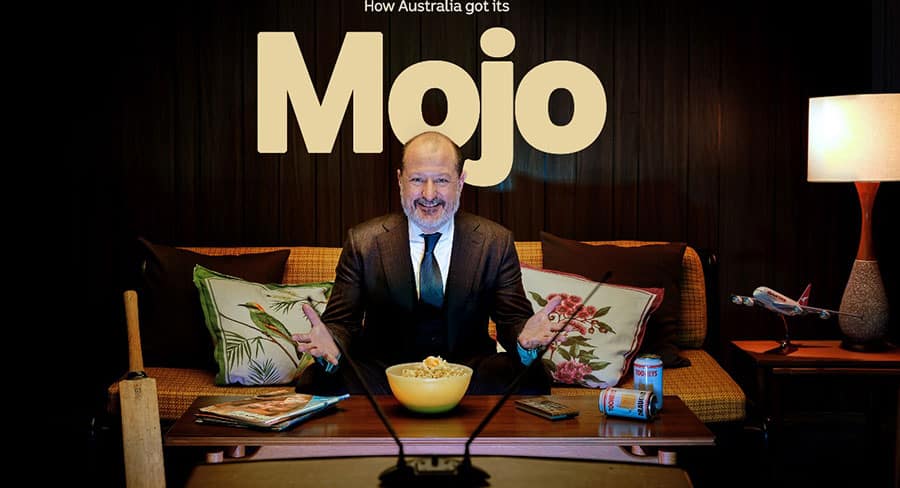It’s a big week on ABC TV for people interested on how and why advertising works.
Long time advertising and marketing executive Russel Howcroft will be a key part of two series for the next couple of weeks.
He is one of the originals on Gruen, which returned for its 11th season on Wednesday last week. This week sees the launch of How Australia Got Its Mojo, hosted by Howcroft, a series telling the story of adland greats Alan ‘Mo’ Morris & Allan ‘Jo’ Johnston.
Howcroft credits the concept for How Australia Got Its Mojo to Michael Stanford, someone that Howcroft has known for a long time and they both worked together at George Patterson and Network 10. Stanford is back at 10 as national creative director of 10’s Imagine division.
“When we were working at 10 we said to each other there is such a good story in Mojo,” Howcroft told Mediaweek. “We talked to Gruen producer CJZ and we subsequently decided to pitch it to the ABC.”
Howcroft’s pitch: “The two most important cultural voices since the invasion aren’t Banjo Patterson and Henry Lawson, they are Allan Johnston and Alan Morris.”

Howcroft with Delvene Delaney and Allan Johnston
“Good on the ABC for allowing us to explore that which has been a very worthwhile exercise.
“My Gruen colleagues at CJZ put a lot of effort into it – Andrew Farrell [head of factual] and Polly Connolly [also produces Gruen]. Something like this takes a long time to do properly with significant research, significant use of archival footage and a significant group of people who were interviewed.”
Speaking about the guests, Howcroft said everyone approached was very happy to be involved in a documentary about Mojo. “There is definitely a fondness for the time, but also the individuals involved.” Those guests include Delvene Delany, Ita Buttrose, Paul Hogan, John Singleton, Ian Chappell, John Brown and former advertising colleagues Ted Horton, Judith Pearson and Doug Watson.

Howcroft with Paul Hogan
While Alan Morris passed away a decade ago, viewers do get to meet Allan Johnston. “They will see what a gentle man he is, something that was appreciated by everyone involved in that era.
“We filmed Ita Buttrose before she had been appointed ABC chair. John Singleton was hugely impressive and he was something of a competitor at the time.”
The thing that made Mojo exciting, said Howcroft, was it was an Australian business working on Australian brands and doing Australian-style advertising.
“They created their own way of doing things. By all accounts clients were literally knocking on the door, asking, ‘Can we have one of those please.’ The sales graphs for all Mojo clients were trending north, and going north rapidly and they had very successful commercial partnerships.”
These days, Howcroft noted it feels like there are increasingly fewer clients prepared to take a leap of faith in a creatively unique campaign. “The world of marketing has a technology side to it now – data rules. A lot of us are hopeful that creativity starts to get more of a voice in the world of marketing communication.”

Howcroft with Allan Johnston
As to whether Johnston and Morris might have been frustrated working today, Howcroft said “Probably.”
Howcroft added: “Because they were definitely gut feel people. I love the stories around how they worked.
“They would give a client a cassette. They’d tell the client to play it one the way home in the car. ‘If you wake up in the morning still humming the tune, you know you’re on a winner.’
“It was a powerful way to sell.”
Howcroft said he hoped one take out from the documentary is about how Mo and Jo were outstanding singer/songwriters. “Yes, they wrote about products. But if they had chosen to have a pop career, they would have been successful. C’mon on Aussie C’mon was a best-selling song.”
Asked if advertisers and marketers might be over-thinking their advertising these days. Howcroft said, “no.”
“There is a risk of getting it wrong. There is nothing wrong about thinking. An old boss of mine used to say, ‘You’ve got to think until it hurts.’
“These guys were instinctive and did it by feel. That shouldn’t imply that they weren’t thinking really hard.”
Howcroft added: “We don’t celebrate those individuals as much know as we may have in the past. There are people who just know how to do it. And the clients reap the rewards.
“John Singleton for example. Ted Horton is an example of today’s advertising creative.”
Russel Howcroft at work
The part-time TV host and panellist told Mediaweek about his day jobs.
“I have two jobs really. I’m a partner at PwC and part of the CMO Advisory. CMOs these days are presented with lots of options and it can be a confusing marketplace. We do the best to give them a hand with strategies for growth.
“I am also the chief creative officer of PwC. That sees me applying what I know to how they express their brand.”
Howcroft started the CMO advisory when he joined the firm. “It was started because we hypothesised the market needed a bit of a hand.”
He used an example of a client who had a marketing budget of $10m. “What they should do with that $10m is really tough to answer. In the Mojo days it was easy. Make a TV commercial, screen it and 80% of the country would see you. It’s not like that now.”
Howcroft said the expansion of what PwC can offer clients has been successful. “A place like PwC is now able to help, and I am pleased to report we are still in business. If we weren’t delivering for clients we wouldn’t be.”
—
Top Photos: Russel Howcroft
